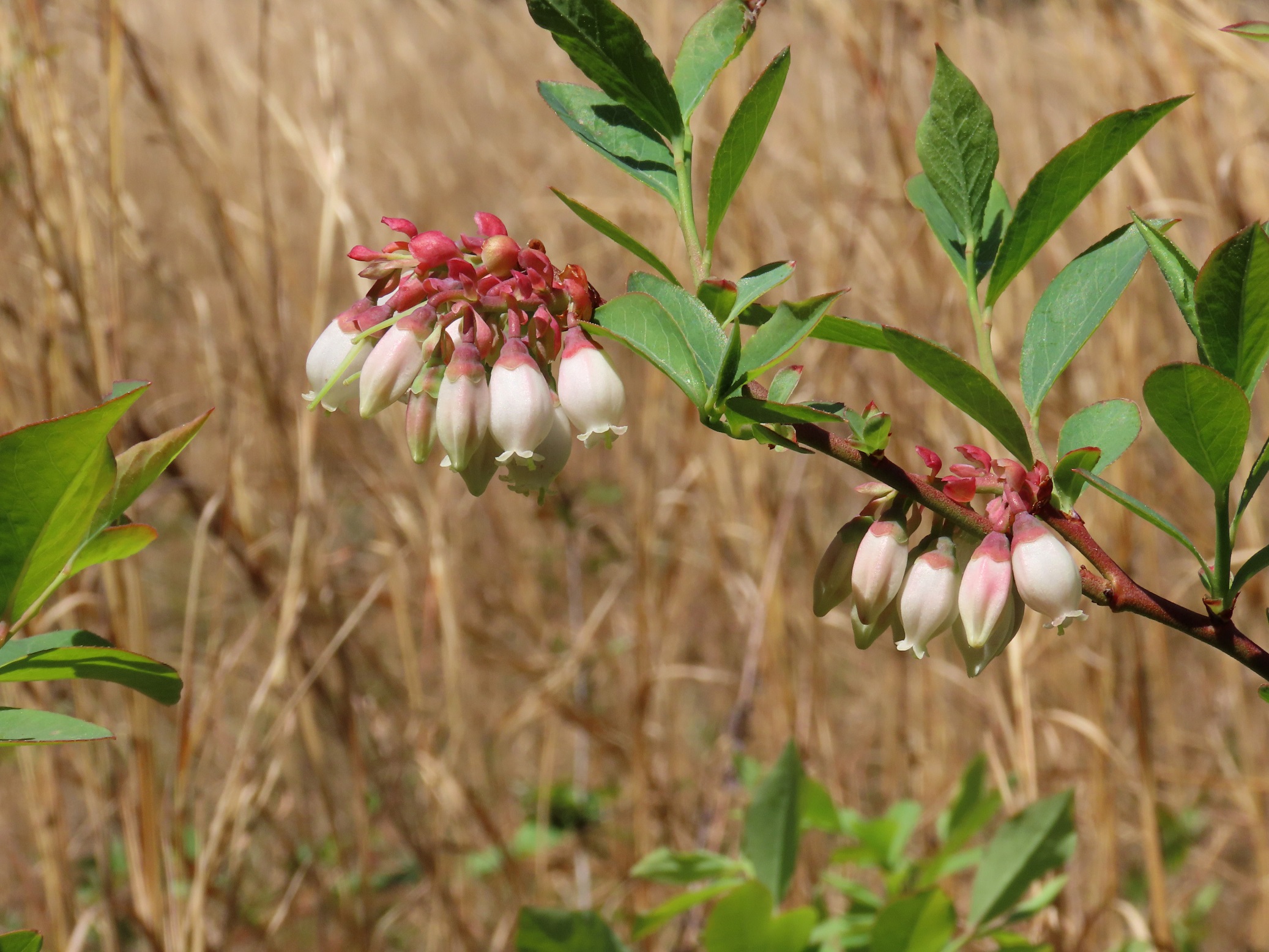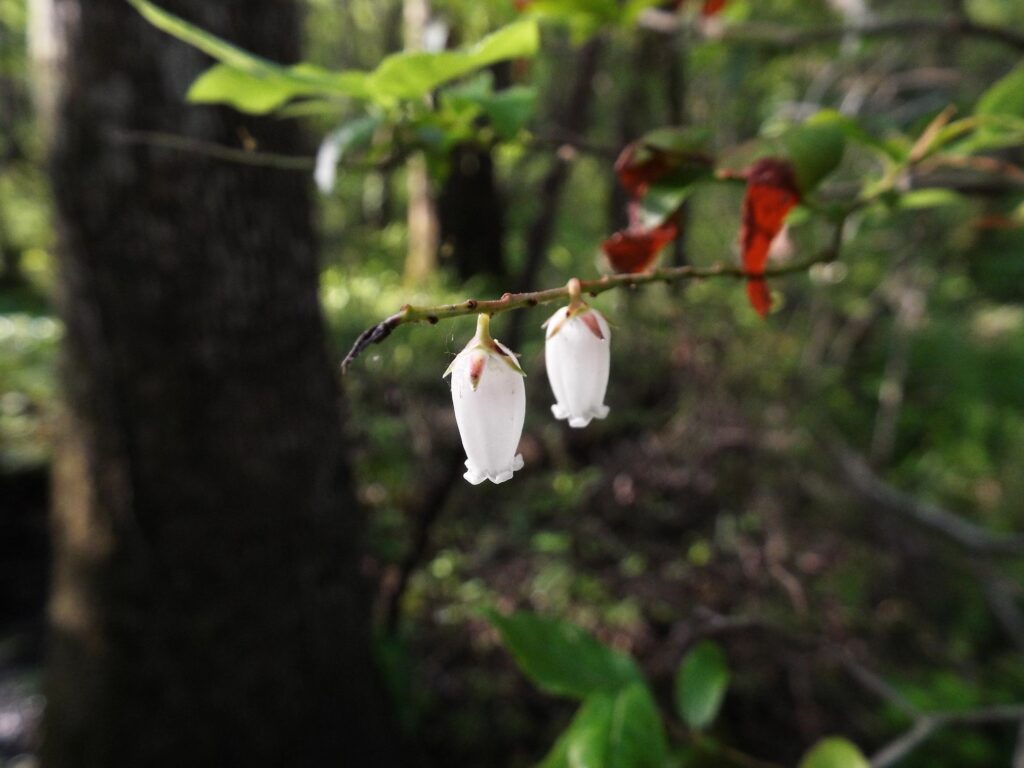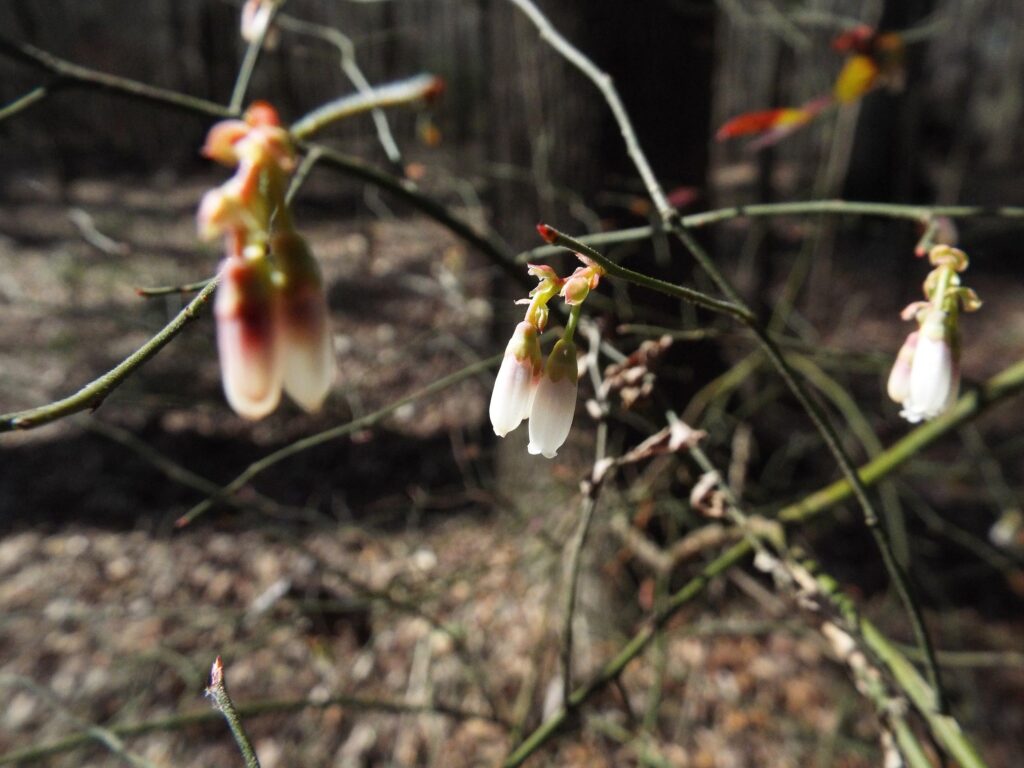


This week for Flora and Fauna Friday we have a widespread spreading shrub that’s all the rage this time of year, Blueberries, genus Vaccinium.
Blueberries are a diverse genus of bushes native to the Southeast. The genus of Vaccinium includes not just Blueberries but also Cranberries and Huckleberries as well as the locally native Sparkleberry bush. Here in the Lowcountry, we have about eight species that can be considered proper Blueberries, at least one Huckleberry, and the aforementioned Sparkleberry. The Blueberry genus belongs to the Heath family, Ericaceae, which includes many of our most popular southern shrubs, such as Azaleas, Rhododendrons, Mountain Laurel, and Fetterbush. Heaths as a whole are gnarled growing, laterally spreading, acid soil loving bushes with spring flowers and a thicket forming nature. Blueberries tick all of those boxes but are not as extreme as many of their relatives.
Blueberries grow in forested habitats on a wide array of acidic soils all across South Carolina. Spreading from fire scorched savannas, up ravenous hillsides, over barren sandhills, and into stagnant Carolina Bays you can rarely go far in our state before running into a Blueberry of some shape or form. Blueberries can differ a great deal in appearance between the different species. Some species form low, expansive thickets only a foot or two above the soil while others crawl along the ground like a vine and yet more climb ten-foot high above the forest floor. However, all share similar traits in their leaves, their stems, their flowers, and, of course, their fruits, which distinguish them as Blueberries. All our Blueberries have small, simple leaves with a slightly leathery texture and of a paler hue of green erring on the yellow side of the spectrum. Some species are evergreen, some deciduous, and some can’t make up their mind. On top of that, they have green stems that can turn orange or red on one side when exposed to light. Regardless, their wiry, twisted growth and loose thicket arrangement are usually enough to discern their lineage while wandering the woods. Another more telling character is in their flowers: small porcelain-white urns, blushed with pink and overturned to spill their scent upon the twilight of winter. Of course, following the flowers is their namesake blue berries. The size, quality, color, timing, and flavor of our Blueberries runs the gambit between species. Some are small, dark, late, and tasteless. Others big, blue, early, and sweet. Just a handful are small, blue, late, and rich in a deep flavor that can only be ascribed as “Blueberry”. All are round and either a powdery blue or deep bluish-black in color. For the record, practically all of our cultivated Blueberries here in South Carolina belong to one of two species: Southern Highbush Blueberry (V. formosum) and Northern Highbush Blueberry (V. corymbosum). Both species are very similar, forming tall bushes that produce plentiful large fruits. They’re so similar in appearance that they used to be considered the same species. The two are both native to our area but Southern Highbush Blueberry is the more common wild plant here in the Lowcountry.